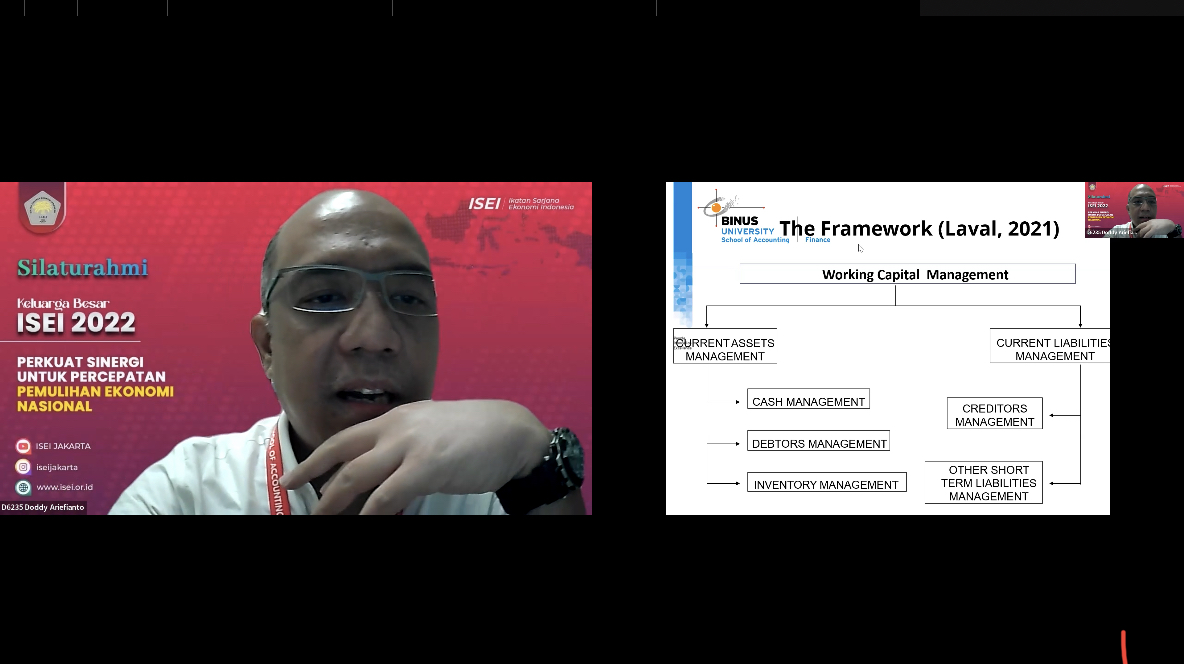Technology advancement have enabled businesses to create innovations to outperform the market and generate profits, such as digitizing banks or using information technology in accounting. However, according to a 2019 Pricewaterhouse Cooper (PWC) report, even in this digital era, technology is not the next driver of business value, but Net Working Capital (NWC), aka the assets minus liabilities.
Dr Moch. Doddy Ariefianto, SE., MSE., an Assistant Professor from Binus University, discussed this view in a guest lecture session on Wednesday, 5/10/2022. Doddy explained that, in accounting, Net Working Capital (NWC) consists of cash, receivables, and inventory minus debts or other current liabilities. This indicates a “idle” company resource. That is, they sit in the warehouse as inventory or are still held by the buyer as receivables. If we put the NWC too low, it can put the company at liquidity risk. However, if the NWC is too high, the company is inefficient.
Therefore, we need to find the right level. Inventory is the biggest challenge to create value from NWC, followed by receivables and liquid assets (cash).
“Be efficient with your inventory. Larger inventory means you must pay more storage costs for warehouse, equipment, and even CCTV. So, you have to know the exact quantity and when to order. It can be estimated with delivery times and minimum inventory levels,” Doddy explained. “One solution is using Just In Time inventory with the economic order quantity (EOQ) model.”
According to Doddy, the main step to improve NWC is to build a data foundation. The more data you have, the more tools you can use.
“You can even apply advanced data analytics. Improve your business performance and continue to explore innovation opportunities,” said Doddy.





